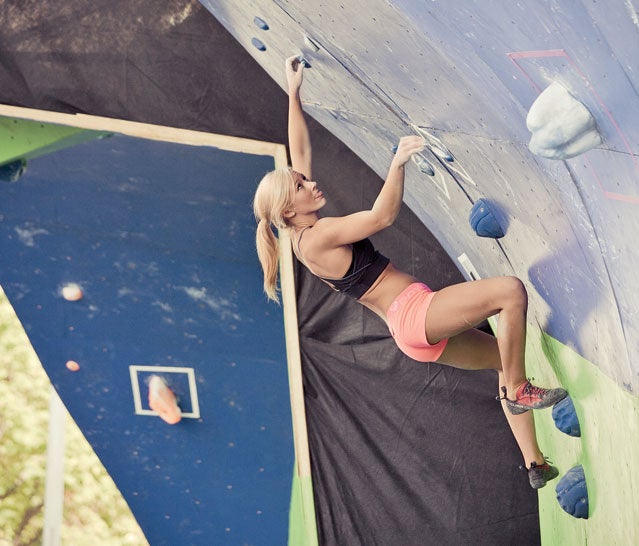AS TOLD TO MADISON KAHN
1. Size the Shoes Right
You generally want to buy climbing shoes two sizes smaller than your street shoes. A good way to test for fit is to wear them for a half-hour while watching TV. They should be tight enough that you can withstand about 30 minutes of wear, but not so painful that you can’t walk.
2. It’s All About the Pad
Bouldering is liberating because you aren’t tied down to ropes and a harness. And if you have the right crash pad, you don’t need to worry as much about falling. I’m sponsored by Asana now, but I started using the ($160) long before I joined the team. It hits that sweet spot between stiff and soft, and it’s also a great size, not too heavy, for carrying to and from the boulder field.
3. Pamper Your Feet
Calluses and blisters are inevitable. Even little pains like these can keep you from climbing at your full potential, so you have to take care of your feet. Get a pumice stone to rid yourself of calluses regularly. If your feet are feeling especially gnarly, treat yourself to a pedicure.
4. Stop the Burn
I use SportStick ($35) to relieve pain and soreness instantly. I call it my magical cream because it works fast and gets rid of any inflammation, swelling, bruising, or pain I have after a long day.
5. Do Your Homework
When I was starting out, I supplemented my learning with websites and books by climbers I looked up to. Tori Allen’s was the book that sparked my interest in competition, and Eric J. Hörst’s helped me improve my technical and mental skills and showed me how to build enough strength to compete.


